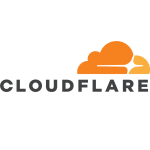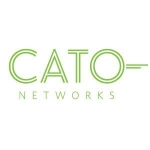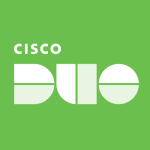What is our primary use case?
We are using Prisma SaaS for products. We use many content-based platforms and we were using this product to perform policy detection. If someone is sharing something publicly, externally, from our domain, which is risky. This product allows you to write policies, and those policies will detect content, which captures them in the policy category or in the criteria. You then can add remediation action for protection.
We deploy the solution using their infrastructure and we connected that solution with our applications.
How has it helped my organization?
Prisma SaaS has helped the way our organization has functioned. Before the used the solution, we needed to write API calls for every platform to receive data out of it. It's a tedious task because we have 20 products and you need to write 20 application API calls. Once you receive the API calls, you need to massage and manipulate the data, search, and filter it. We need to write the full-fledged application. However, this product does it all, it gives you everything.
Instead of writing applications, we only need to go into one place, one URL, and we are able to do whatever we need to. In terms of hours, it saved us a lot of time and hours to do similar tasks previously, which we used to do using API calls to the product.
What is most valuable?
This is a one-stop solution. They have multiple features for every product, you don't need to purchase different products for each platform. When you purchase one Prisma SaaS you can connect to 10 different things. You can write different policies, attach different policies, search, and export the data out. There are many capabilities of this solution.
The solution has all its capabilities in a single cloud delivery platform which is great and it provides overall good protection.
What needs improvement?
If you compare Prisma SaaS against other products, such as Cloud Log, it's a little bit tricky to understand, but it offers different functionality that other products don't have. From a user usability point of view, you need some training for this product, as an admin, you need a couple of demos.
The reports and setting the policies could improve, they are important. Their UI is a little bit confusing when you create the policy section. There are times when it looks like you are in one section, but you're technically in another section and you're saving something else. The need to make it more clear in the UI for policy creation and setup.
For how long have I used the solution?
I have been using Prisma SaaS for approximately one year.
What do I think about the stability of the solution?
The stability of the solution is a little bit slow when you do searching. However, I have never seen an error on the application for over one year. It is stable.
What do I think about the scalability of the solution?
The scalability of Prisma SaaS is very good.
We plan to increase the usage of this solution. We are working with the compliance team and we are trying to find more policies and more products where we can use Prisma SaaS. We have recently renewed the solution for three more years.
How are customer service and support?
If we open a private ticket, they're pretty fast. They get back to us in a timely manner and we work with them actively.
I would rate the technical support a seven out of ten.
Which solution did I use previously and why did I switch?
We have two solutions that we use. We also use CloudLock for a specific product. These products are usually application-based, and if you compare BetterCloud and CloudLock, CloudLock is good for Google. Similarly, BetterCloud is good for Dropbox because their EPA's are more integrated. Prisma SaaS is good for receiving data from OneDrive, Office365, and a lot of other products. We have multiple products depending on the use case.
How was the initial setup?
The initial setup is straightforward. It's a SaaS product, we only need to log in and integrate our apps using our administrative rights.
The full deployment takes a couple of weeks. The deployment is easy, but the scanning takes time. If you connect a product and that product is having a terabyte of data, the scanning will take time. However, deployment connecting to the products, it's fairly easy.
We implement the solution in a sandbox environment and a production environment. The sandbox environment is connected to our sandbox applications, and production is connected to production applications. Whenever we are trying to launch a new policy, we used to try a new sandbox first. If it goes well, we send it to a production environment. We upload a sample of corrupted files to see if the policies are acting as they are supposed to.
What about the implementation team?
We used an integrator and we worked with them directly.
We use approximately 40 hours a week for the maintenance of the solution to get everything done.
What's my experience with pricing, setup cost, and licensing?
The pricing can be difficult because it came to us with another agreement, but it can be negotiated. I highly recommend people to compare this product's performance and pricing against BetterCloud, because I feel BetterCloud is better than Prisma SaaS if they're starting from scratch.
What other advice do I have?
The auditing does not protect all application traffic. It's more content-based. For example, if I uploaded a file and that file has sensitive information, Prisma will detect it. It will tell me where that file has been uploaded, how it's shared, whose current external parties were accessed. Anything which is bound to my user base, I will receive the report, but not the audit log. It won't tell me when users log into the platform, or if they log out. However, it will tell me if they upload anything and take any action on that content.
We can connect the solution to AWS F3, which you can be considered not web-based because it has both products. From the F3 bucket, you can access it through different mechanisms. We are using it for some products which are not purely web-based.
We use SaaS products. That means infrastructure is not in our control and if you upload something into those platforms, such as Dropbox, any content that is put into the data system, we need to make sure that our data is protected and not shared outside. This product and its processes allow us to monitor it. We can create a policy, and limit the action. A person does not need to wait and then take action. For example, if someone uploaded something critical, a Saas policy gets triggered, and it automatically brings that operation down. If someone shares a file publicly, the policy triggers and detects the file and removes the public sharing. This is how we are protecting our data within our platform using this product.
I have learned from using this solution we should have more policies created as per compliance and security to utilize the features of this product better. If you have this product and if you're not writing a policy, then this product is useless. Right now we have basic policies, four and five, which I feel we have the potential to increase to 15 or 20.
I rate Prisma SaaS by Palo Alto Networks a seven out of ten.
Which deployment model are you using for this solution?
Public Cloud
Disclosure: PeerSpot contacted the reviewer to collect the review and to validate authenticity. The reviewer was referred by the vendor, but the review is not subject to editing or approval by the vendor.



















